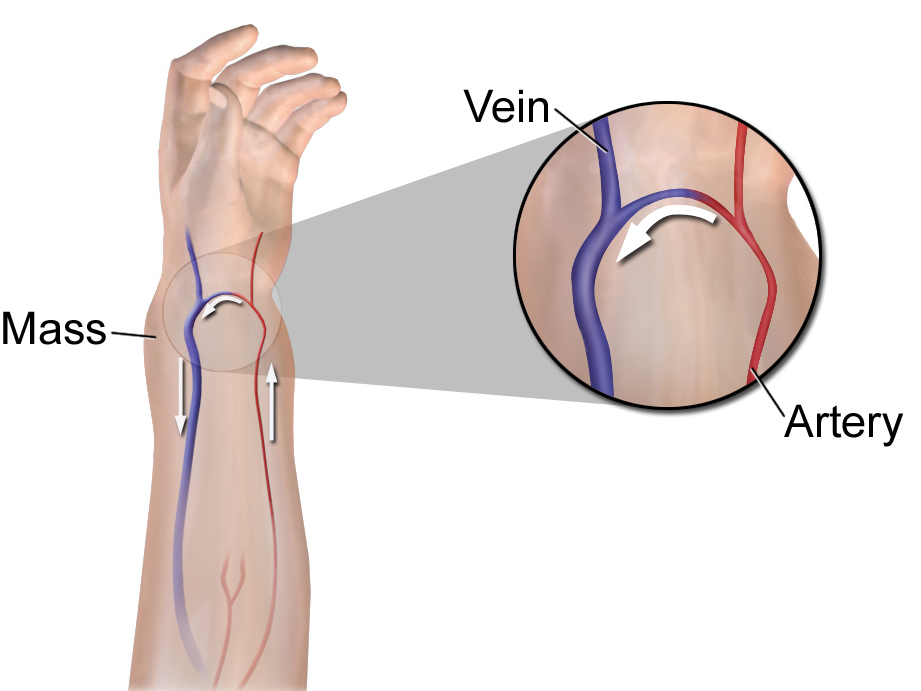If the kidneys fail, dialysis, (the process of filtering the blood), is necessary until/unless a patient undergoes a kidney transplant. There are 4 ways to establish a way to have dialysis:
- Tunnelled catheter This is a tube that goes into a vein in the neck, through which blood is removed, filtered and returned. This is minimally invasive, but is usually temporary, because the catheter lays in the upper chest/neck and has a higher infection risk.
- Arterio-venous (AV) fistula–this involves taking a piece of a vein from the your arm and sewing it into a nearby artery. Over time, this connection enlarges and become thicker, like an artery and dialysis is performed using this spot. This is considered the best option because it has the lowest risk of infection.
- AV graft—involves sewing a prosthetic graft between an artery and vein in your arm. This is performed if the veins are too small for an AV fistula and typically is not as ideal as a fistula. Because grafts are a foreign material, they are more prone to clotting and infection.
- Peritoneal Dialysis (PD) catheter–placement of a small tube, called a cannula, through the skin directly into the abdomen. This allows the use of the lining of the abdomen (peritoneum) to filter your blood. It requires several “exchanges” every day: you introduce and remove fluid through the tube. A convenient option because you perform the dialysis therapy at home, but infections sometimes occur and the tube can become clogged.



